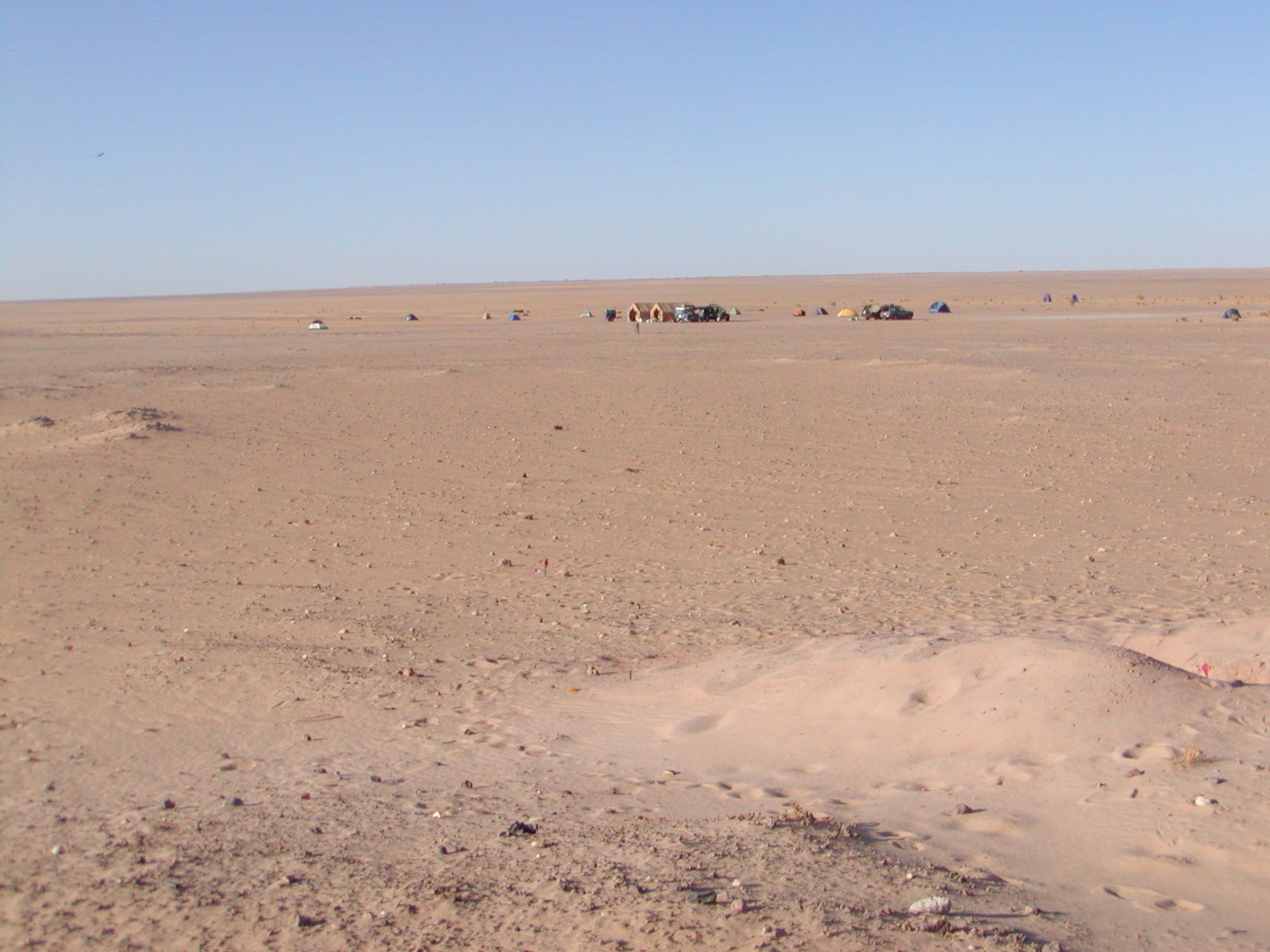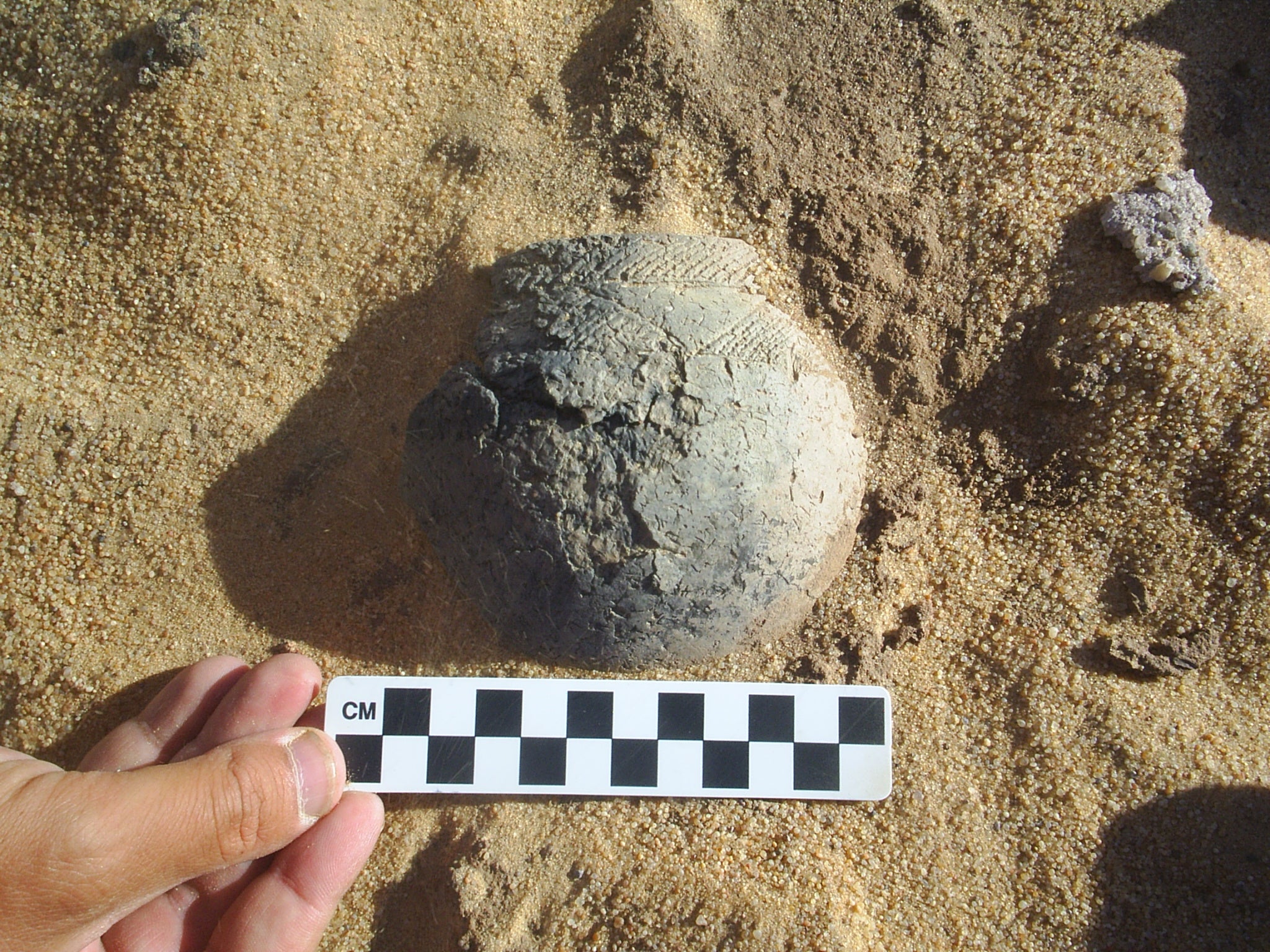Ten thousand years ago, the Sahara was green. Lakes, grasslands and trees covered what is now the world’s largest hot desert. People lived there on a lakeshore in the modern West African nation of Niger, eating fish, making pottery, dying and being buried in a cemetery.
Then the desert dried up about 8,000 years ago. Scorching heat turned the lake into a cracked mudflat, then dust. People can’t live without water, so they left.
A thousand years after that, the rains returned. The lake became a lake again, though much shallower. People returned, but they had changed too. They were shorter and lighter built, but they also hunted, fished and collected plants much like the people before them. They also buried their dead in the same cemeteries.
And when the desert returned, this time for good around 4,000 years ago, those people disappeared and were forgotten as well.
This is a story about archaeology. It’s about the difference between what people think it is and what it actually is, and about how it changes over time.
The Saharan cemeteries were discovered in 2000 by a team led by paleontologist Paul Sereno of the University of Chicago.
In 2005, Sereno needed a bioarchaeologist. He knew Jane Buikstra, the creator of the field and a Regents Professor in Arizona State University’s School of Human Evolution and Social Change.
“She asked the group of us here who are all very junior if anyone was interested in doing this,” said School of Human Evolution and Social Change Director Chris Stojanowski. “And I said, sure, I'll go; it sounds interesting. And that's how I got involved in that project.”
Stojanowski worked at the site in 2006 for about six weeks in October and November. It’s completely barren. You can drive for miles and miles and see nothing, then come across a huge grinding stone sitting on top of 65-million-year-old sandstone. There was probably a village there long ago, which has now literally turned to dust.
“There are no people living like this in that part of the world today,” he said. “People have adapted and sort of moved on. And so for me, that's a really compelling thing. There are stories to be told about humanity that we only get from archeology and we only get from looking in places where someone hasn't looked before.”
Most of the excavations were done that year. Dust storms blew through, along with the odd insect plague from time to time. It was too hot to sleep in tents, so Stojanowski slept on a cot in the open covered with mosquito netting. With nothing to do at night, he went to bed at sundown and woke up at dawn.
The Gobero dig campsite in Niger.
The team lived on about 500 calories a day. With the heat there wasn’t much of a will to eat. There was also very little water. They had a small tank that kept tipping over and spilling on the way out to the site. There was a well 20 kilometers away. Stojanowski went there with a brand-new water filter.
“It worked once,” he said. “The filter completely filled up with goat dung and silt.” Malaria pills made some sick. And forget bathing.
The team had a contingent of five armed guards. Various political and religious factions roamed around. Kidnapping was a concern.
Stojanowski was in a bad accident on the way back from the site, ending up in a missionary hospital with a broken back, foot and nose. When he was released (after only one night), he took an 800-kilometer ride in the back of a 1970s Datsun hatchback alongside gas cans over partially paved roads, then had the long flight home from Africa.
“Now it's like this great story, but at that time it was pretty rough — definitely the worst pain I'd ever felt,” he said.
Stojanowski has written about a half dozen papers on the Gobero project. It should be more, he says, but in the past five years he has been doing administrative work. He started writing papers in 2008.
“It's something I plan to pick up though and finish once I go back to a faculty position, whenever that is. Because there's a site report that I need to do. There's a lot of work that needs to be written up on that site.”
A find like Gobero can yield as many as two dozen papers and a book.
“I would say for that site, since it's so unique that there's so many firsts that we haven't published yet. There's probably the earliest evidence of dental filing in Africa that we haven't published yet. We published a paper on tooth avulsion, the intentional removal of the front teeth, but not fully described what we found yet.”
A practice of incisor avulsion is still practiced in Africa today, which goes back to around 15,000 years ago. It’s an ethnic marker, like body scarification. There's an old theory floating around that they started doing it because of tetanus. When people began herding cattle and living a pastoral life, tetanus became an issue. Maybe not having front teeth allowed you to suck up gruel if you had lockjaw or something like that.
“This one burial we found could be evidence of that particular theory,” Stojanowski said. “That's a long way of saying I could write a paper just on that burial.”
Preserving ancient burials can be very emotional. People tend to be forgotten after three generations. Jewelry carved from hippo ivory shows there were people with emotions and loved ones. They grieved and buried these finely carved items with their dead.
Small pot at the Gobero dig in Niger.
“Some of what I do is I try and prevent (forgetting) from happening: going in and creating these narratives about people and communities that are no longer around and are kind of lost to time,” he said. “At certain times you do have these moments of connection. It's in those very small things I would say. And by that I mean intentional acts that were probably very small when they were done six, seven, 8,000 years ago, but create a connection to the past. That's very humanizing. Taking the time to clasp the hands of two children being buried together for example, it's very different than a lot of people in the public may assume — that life was really tough and rough 10,000 years ago.”
As the School of Human Evolution and Social Change director, Stojanowski is acutely aware of how the school’s messaging is pitched with regard to the public’s understanding of what archaeology is versus what it really is.
“It's not about Indiana Jones. It's about careful work in the lab and in the library, and it's very detail-oriented and you're working with datasets. However, there is still something to be said about exploration and discovery — there are amazing things out there that capture the public imagination that are worth considering. And there are parts of the world that are really unknown.”
Sereno is working on museums and infrastructure, to give back to Niger.
“There's also the part that comes back and relates that back to the people who are still living there today and how they can benefit from the work that you're doing,” Stojanowski said. “And that's really where my field has shifted in the last 10 years.
“For me, I would say the story is about a country that is often at the very bottom of the UN Human Development index. It's a very poor country, very poor infrastructure. Being there, it's hard not to be affected by it. If you can do this work that elevates Niger in a global way that brings attention to it in a positive light, I would say ... the more people that could go to these places and have some kind of experience is good. Not only for the person from, say, Arizona in terms of their personal growth, but also for the people in Niger.”
All photos courtesy Chris Stojanowski
More Arts, humanities and education
ASU FIDM students to see their designs on the runway at Uncertainty Fashion Showcase
Nola Hill is perfecting every stitch of her fashion design collection, which she started conceptualizing last summer.She is among 30 ASU FIDM fashion design students who have been working late into…

ASU+GSV Summit brings experts together to discuss innovation in education
This week, Arizona State University President Michael Crow and other university leadership joined education and learning experts from around the globe at the ASU+GSV education technology summit in…

ASU professor's project helps students learn complex topics
One of Arizona State University’s top professors is using her signature research project to improve how college students learn science, technology, engineering, math and medicine.Micki Chi, who is a…




